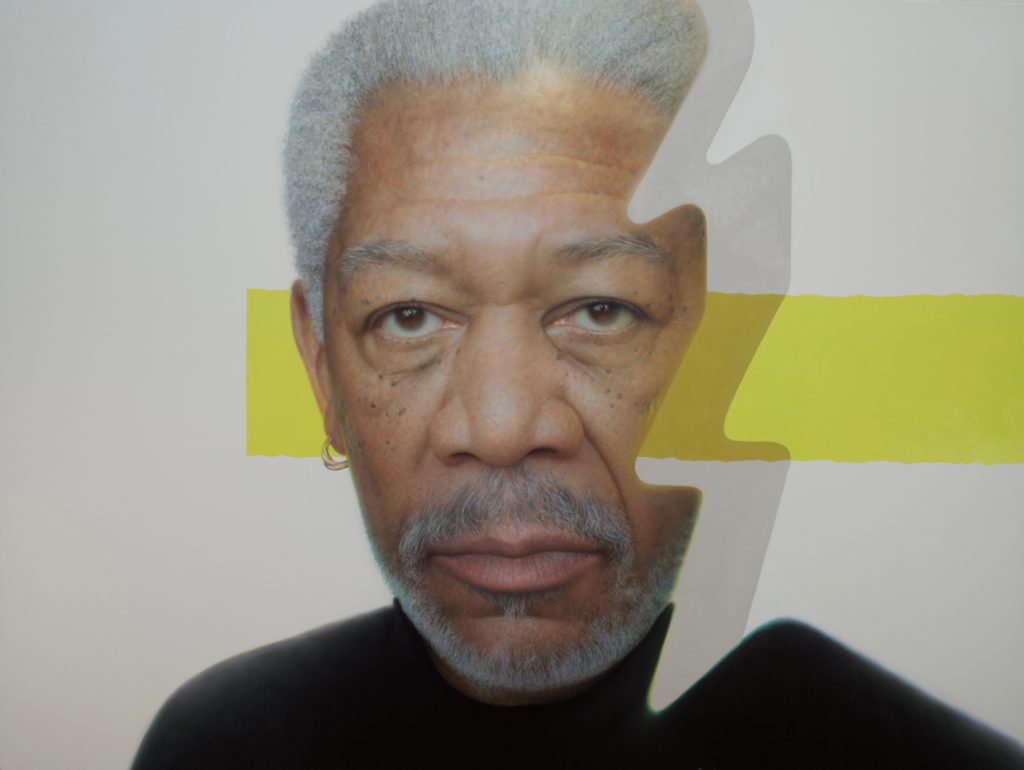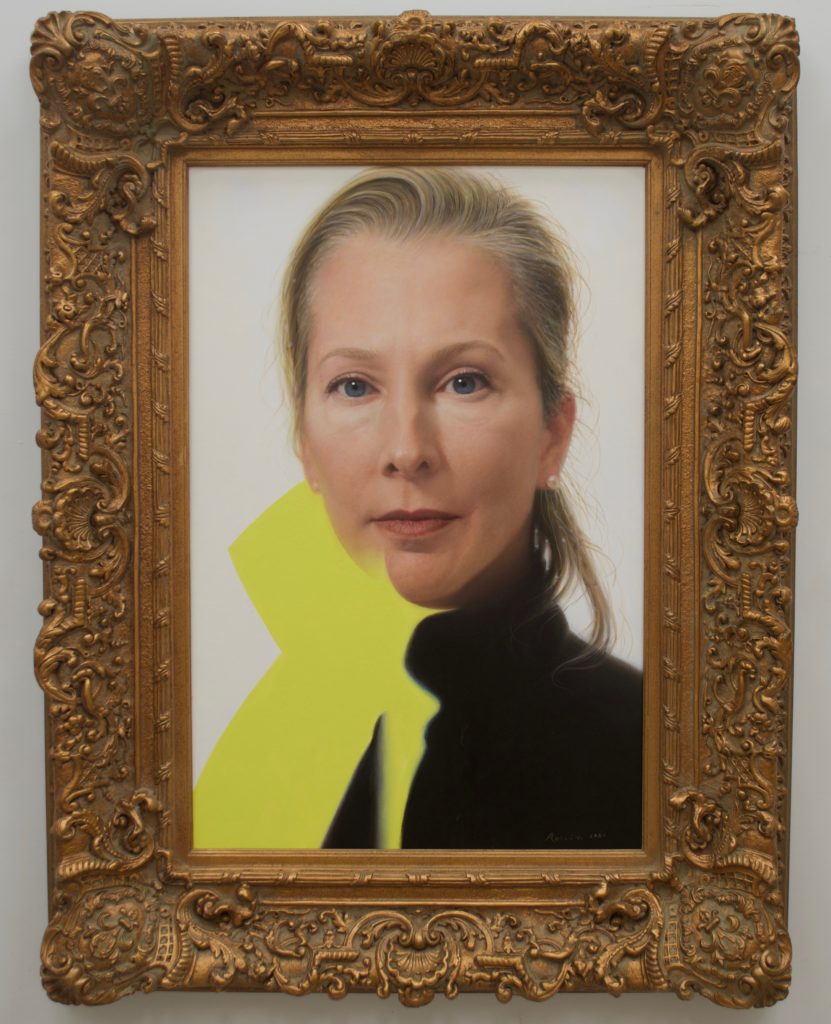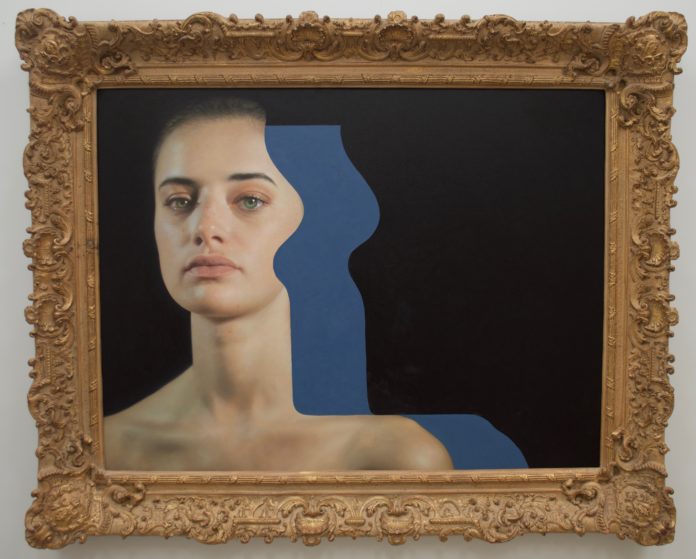The Booth Museum is shining a spotlight on the enduring power of the American West as a transformative muse for artists from around the world through “Captivated: Rossin’s Southwest & Beyond.”
“Bulgarian-born American artist Ross R. Rossin grew up watching many of the same Western movies we all did, dreaming of visiting Monument Valley, featured in so many of director John Ford’s classic films,” says Booth Director, Seth Hopkins. That dream became reality in March 2019, when Hopkins and the artist spent nine days exploring parts of Nevada, Utah, Arizona, Colorado and New Mexico.
The experience has had a profound impact on Rossin’s work. Known internationally for his hyper-realist portraits created in the centuries old traditions of portrait painting, Rossin’s new, Western-inspired work, is quite a departure. “I felt this overwhelming sense of freedom, sense of liberation, from anything that resembled my convictions or conventional thinking or ideas about traditional art and what it should be. That’s what the West did to me,” said the artist.
This unexpected artistic detour comes in the midst of growing recognition for his traditional work. In recent years, four of his larger-than-life, celebrity portraits have entered the Smithsonian’s National Portrait Gallery collection, including Morgan Freeman and Maya Angelou, sponsored by Oprah Winfrey.

He recently completed his Commanders in Chief Mural Project; a three-part installation featuring all of the Presidents of the United States. Collectively the three paintings encompass over 800 square feet of highly detailed work, measuring 13 by 62 feet, and represent eight years of research and painting. Meanwhile, his commissioned portraits for titans of industry, academic leaders, politicians and the well-to-do are in constant demand.
As busy as he is, Rossin also creates figurative works in his own striking artistic style. Until recently there was relatively little stylistic difference between the two bodies of work. The difference maker? The 2019 trip that included stops at places like Bryce and Zion National Parks, Kanab, Monument Valley, Four Corners, Aztec Ruins, Taos, Abiquiu, Ghost Ranch, Santa Fe and many others. While these locales have captivated visiting artists for well over 125 years, the region’s inhabitants have also been influential. Rossin says, “As wonderful as these places were, in my mind they could not surpass the people I met along the way.”
Hopkins introduced Rossin to several important Western artists on the trip, including Tim Cox, Oreland and Beau Joe, Jody Folwell and Rosetta Santiago. Rossin photographed several individuals, including Folwell and two Native American models suggested by Santiago. Paintings based on these sessions form the backbone of the exhibition. Also on view will be paintings the artist had considered finished, like a major work depicting Morgan Freeman, that he went back and altered significantly based on his transformative Western experience.
Asked to sum up in a few words the powerful impact the West is currently having on his work, the artist sites freedom and clarity. “Clarity, was my first impression, and that is still my strongest impression now. There is the space – the light and rolling silhouettes of the landscape, the clouds and the moving shadows they cast, but much more than that, for me it was the clarity of thought, clarity of spiritual experience, clarity of emotions, clarity of connection with nature in a way that can only be described as magical. It also opened the floodgates of free spirit.

“For decades I’ve been doing what I do, translating, and studying the human face, the human psyche, the soul, with great respect for the form. But, I was wanting to find another angle to tell a bigger story, to go deeper and express ideas about the essence of human nature. And the West did exactly that – it broke the mold and gave me the confidence, the energy and the inner freedom. It gave me the inner freedom to do things like cut the face in half, to break it and free it from its own wretched limitations in this physical world.”
The impact on Rossin’s work was nearly immediate, according to Hopkins. “Within two weeks of returning home, Rossin was sending me drawings, studies and seemingly nearly finished paintings in styles I had not seen from him. There was no doubt the West had left a strong impression on my friend and that he was on his way to creating a body of work for this exhibition as monumental as anything we observed on our excursion.”
Rossin’s desire is for visitors to the exhibition to feel not only his connection with the people and places of the West – but the enlightenment he obtained along the way.

Rossin, is, and a very patriotic naturalized U.S. citizen. His original goal in painting the first canvas in what would become the Commanders in Chief series was to create a “Love Letter to America,” his adopted homeland. He believes it represents the most important American tradition, the peaceful transfer of power, an ideal much in the news in recent months.
For more details about “Captivated: Rossin’s Southwest & Beyond,” please visit BoothMuseum.org.
> Visit EricRhoads.com to learn about more opportunities for artists and art collectors, including retreats, international art trips, art conventions, and more.
> Sign up to receive Fine Art Today, our free weekly e-newsletter
> Subscribe to Fine Art Connoisseur magazine, so you never miss an issue









[…] By Fine Art Today – September 12, 2021 View original article at: https://fineartconnoisseur.com/2021/09/captivated-rossins-southwest-and-beyond/#respond […]